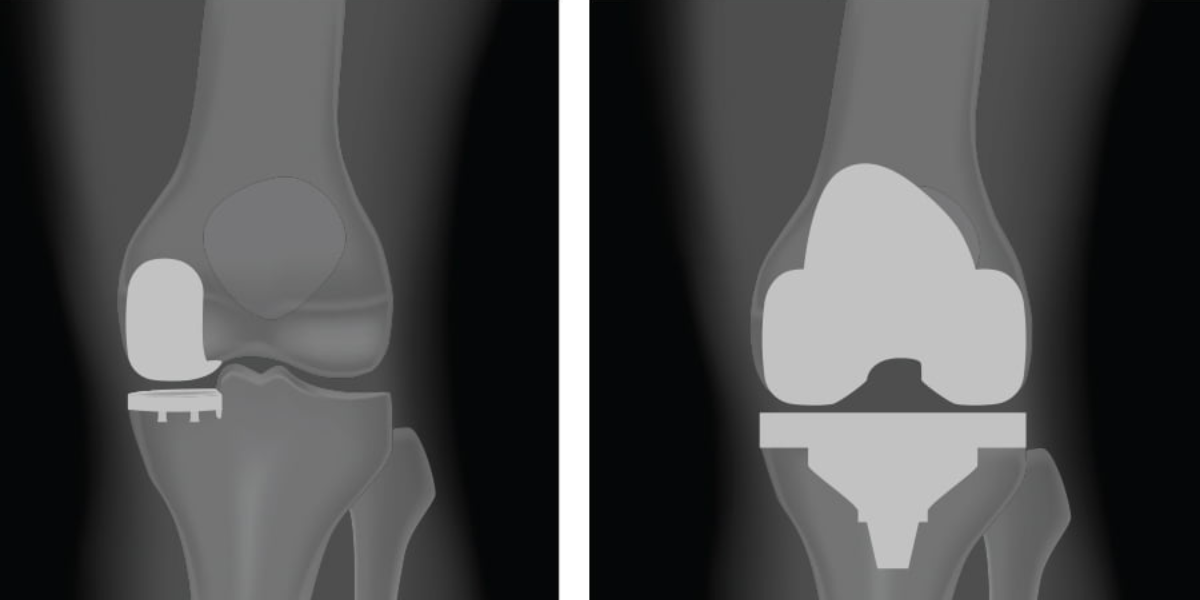March 28, 2025

Partial vs. Total Knee Replacement Surgery: Which Fits Better?
Knee pain can make daily activities difficult, affecting mobility and quality of life. For those with severe knee conditions like osteoarthritis, knee replacement surgery can be a life-changing solution. Doctors typically recommend either a Partial Knee Replacement (PKR) or a Total Knee Replacement (TKR) based on the extent of knee damage and lifestyle needs.
Partial Knee Replacement (PKR)
PKR replaces only the damaged part of the knee, preserving healthy bone and cartilage. This less invasive approach allows for more natural movement and quicker recovery.
Benefits of PKR:
Minimally invasive with faster healing.
Preserves natural knee function.
Lower risk of complications.
Shorter hospital stay and quicker return to activities.
Ideal Candidates for PKR:
Arthritis affecting only one part of the knee.
Stable knee ligaments and good joint function.
Total Knee Replacement (TKR)
TKR replaces the entire knee joint with an artificial implant, making it ideal for widespread knee damage.
Benefits of TKR:
Provides complete pain relief.
Durable implants last 15–20 years.
Improves stability and mobility.
Ideal Candidates for TKR:
Severe osteoarthritis or joint damage.
Knee deformities or instability.
Conclusion
If you have localized arthritis and want a faster recovery while preserving more of your natural knee, Partial Knee Replacement (PKR) could be the right choice for you. However, if your arthritis is severe and affects the entire knee, Total Knee Replacement (TKR) offers a long-term solution for pain relief and improved mobility.
At London Ortho Hospital, our expert orthopedic specialists provide personalized treatment plans to help you regain your mobility and improve your quality of life. Schedule a consultation today to explore the best knee replacement option for you!




